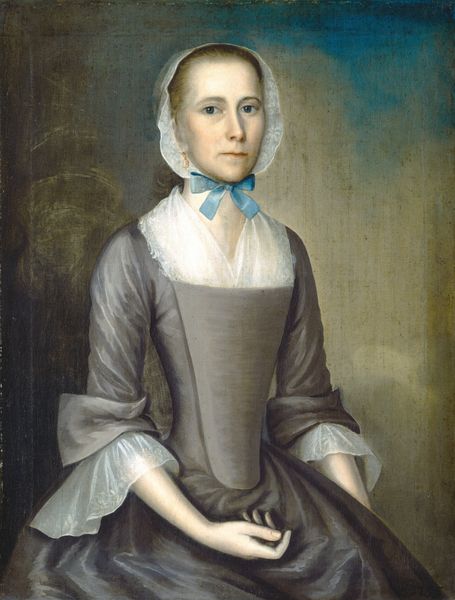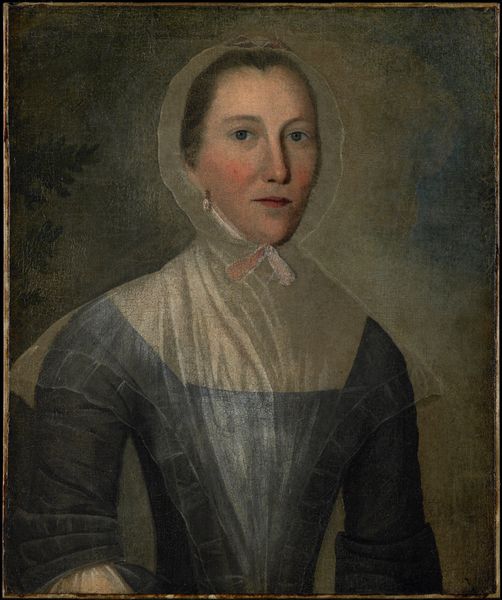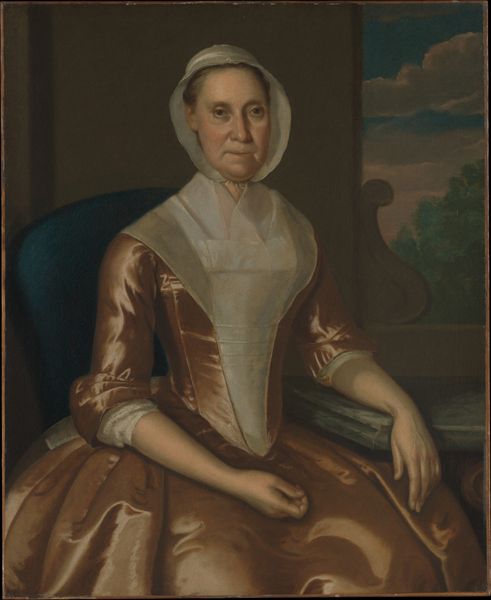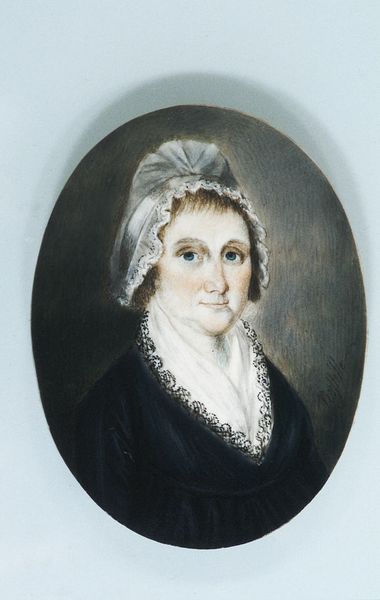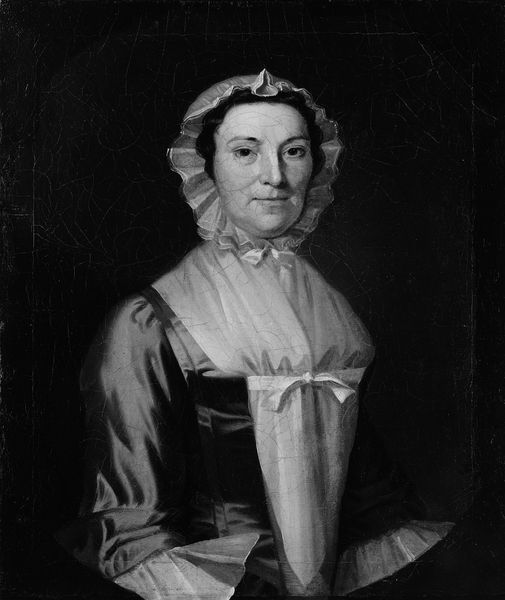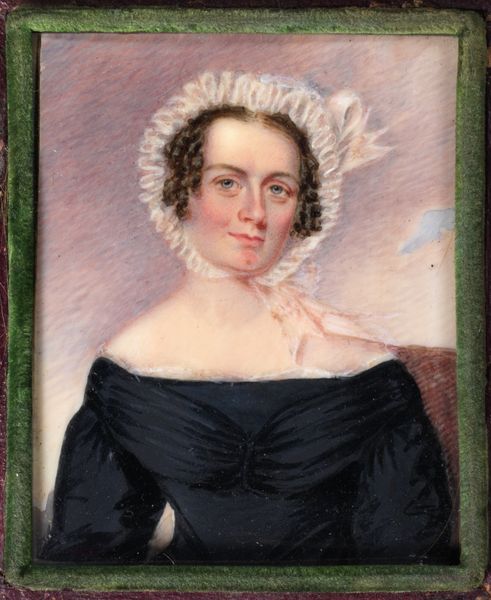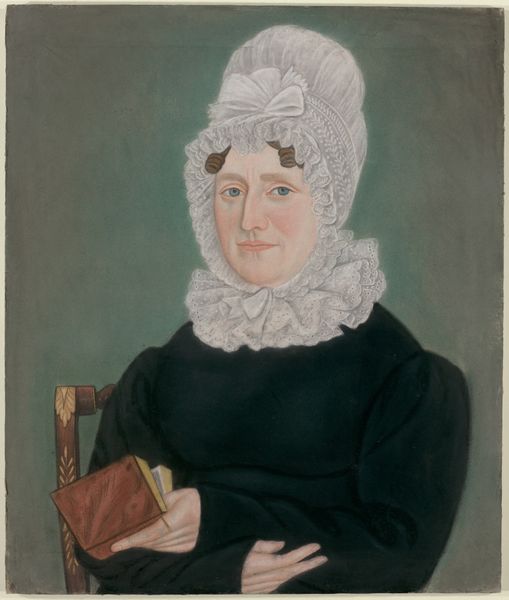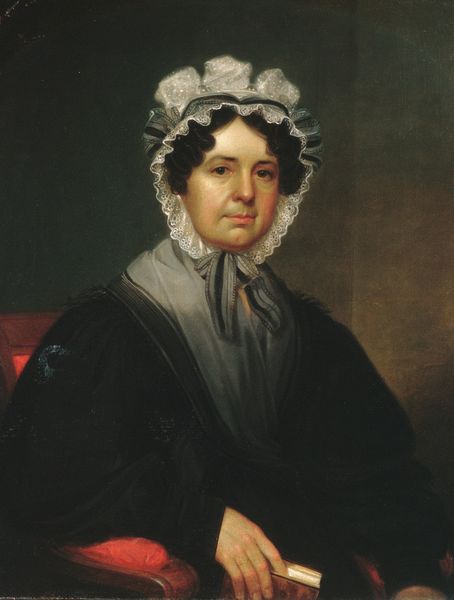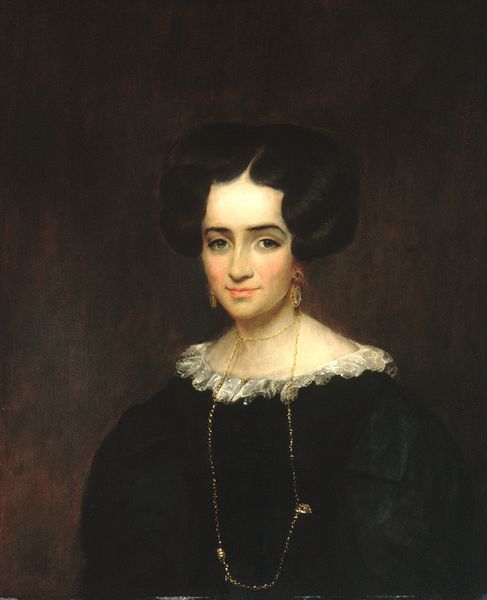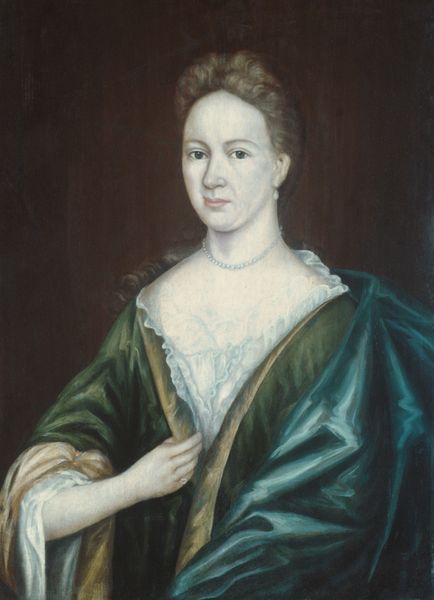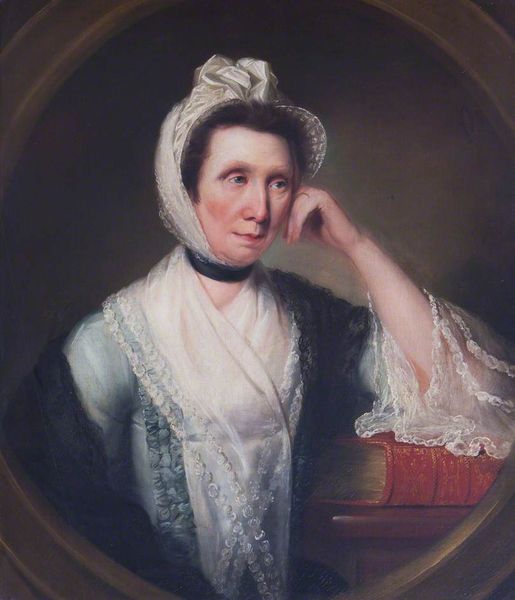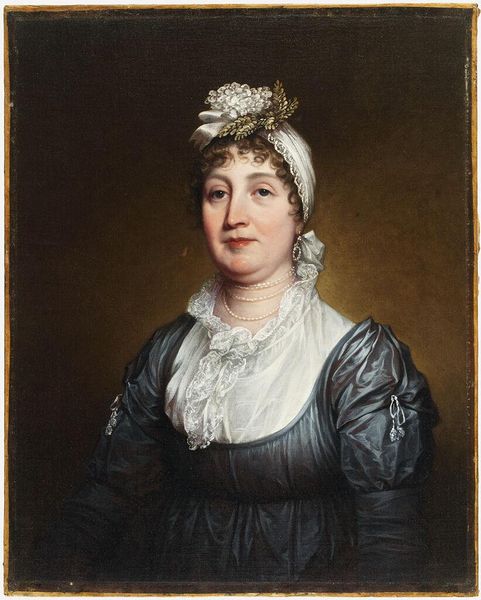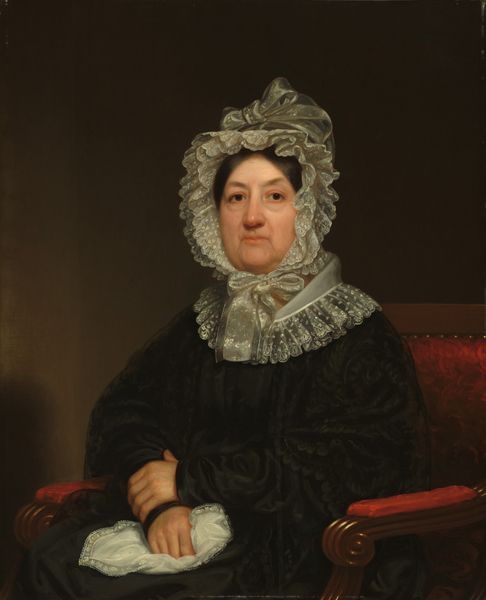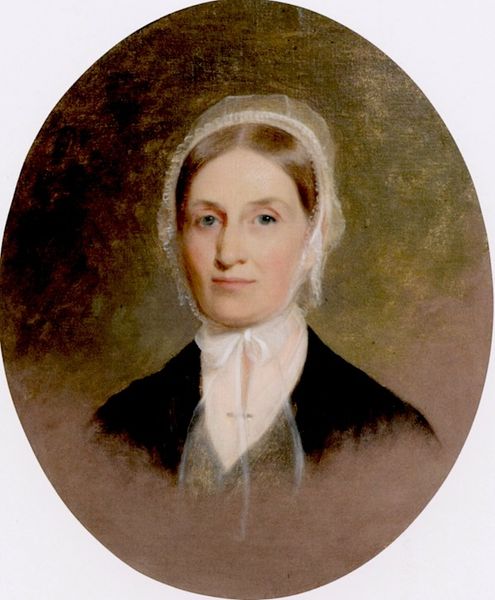
painting, oil-paint
#
portrait
#
baroque
#
painting
#
oil-paint
#
figuration
Dimensions: 30 x 25 in. (76.2 x 63.5 cm)
Copyright: Public Domain
Curator: Here we have John Wollaston's "Mrs. Joseph Reade," painted sometime between 1746 and 1752. Doesn't it have a rather serene, almost melancholic air about it? Editor: The light catches that satin dress in such an intriguing way. I wonder about the textiles themselves – who wove that fabric, the lace? Were they local or imported luxuries, and what does that say about the subject’s status and wealth? Curator: A keen eye! It’s quite striking how Wollaston captures the sheen of the satin. And yes, those material details definitely speak volumes about the subject’s world, doesn't it? Her world feels distant to me, almost a little haunted. There’s an unsettling beauty here that makes me wonder what she was really like. Editor: Well, look at how those imported materials contrast with the labor needed to make them into fashionable goods. What was Mrs. Reade’s daily life actually like, given her dependence on an exploitative global market for cloth and fashioning of the artwork? The consumption of that fine oil paint probably represents other market forces that have escaped history, as well. Curator: Yes, I can appreciate that perspective. However, there’s also something undeniably vulnerable in her gaze. Do you think Wollaston perhaps wasn’t trying to convey a life fully formed or to give any critique, but only simply capture a likeness for her family or spouse, perhaps as an assurance? And with such elegant composition I imagine oil was a very good choice! Editor: Perhaps. It seems likely to have had this familial intention behind it. But remember: Oil paints don't just spring into being! There's the grinding of pigments, the mixing of oils. Consider the supply chains for pigments from around the world… this portrait's serene surface obscures so much global commerce, so much making of a portrait, as an object that obscures much larger material exchanges and economic relations. Curator: Absolutely, it’s layers upon layers, both materially and symbolically. So the painting functions almost like a window then, not just onto a person but onto entire networks of things and relations! Fascinating. Editor: Exactly. It brings those distant global economies into focus and invites reflection on the human labor embedded within such materials.
Comments
No comments
Be the first to comment and join the conversation on the ultimate creative platform.
